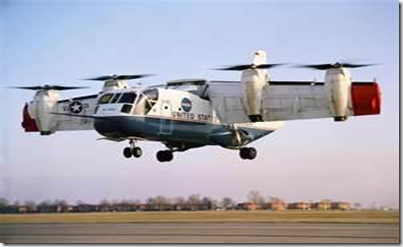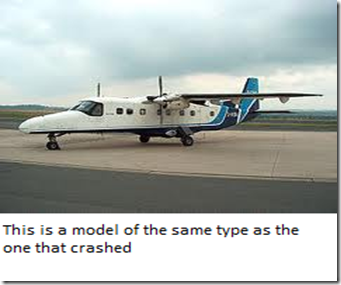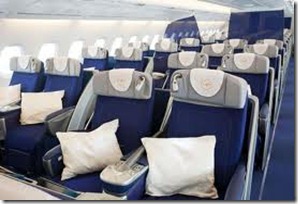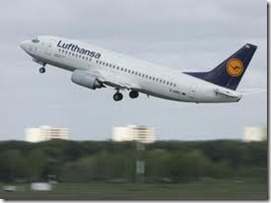Labels
Blog Archive
- 2013 (1)
-
2012
(67)
- October(34)
-
September(31)
- September the 30th
- What about internet during our flight?
- September the 29th
- Something is missing….Bird strike kills all!
- September the 28th
- September the 27th
- September the 26th
- September the 25th
- September the 24th
- September the 23rd
- September the 22nd
- September the 21st
- September the 20th
- September the 19th
- September the 18th
- September the 17th
- September the 16th
- September the 15th
- September the 14th
- Top five reasons why Aviation is my way to go
- Effect of wind farms on radar signals
- September the 13th
- The composite fear factor
- Antonov AN-28 crashes at Palana, Russia on 12th Se...
- September the 12th
- Welcome to Avitech Reader!
- September the 11th
- The Airbus Beluga
- B-1 Bomber Targeting pod software for precision
- What is the Airframe
- Diesel engines in Aircraft-what do you think?
- August(2)
September the 30th
Seems like September is a month fraught with circumnavigation activities. However, we have not yet looked at it done with a helicopter or a rotating wing aircraft. That does not insinuate that helicopters never did it though, because in 1982 (USA), the first round-the-world flight in a helicopter was completed by the Bell “Long Ranger II,” flown by Americans H. Ross Perot Jr. and Jay Coburn. (OTM)
What about internet during our flight?
Rarely do we concentrate on entertainment as a major part of the Avionics in an aircraft. Just until recently, when global trends force us into it. Nowadays, portable computers, can be tablets, laptops or whatever have become the norm and this has been observed as a way of attracting customers. What am I saying…you may wonder-it has been observed that airlines are trying their best to claim their market share by providing passenger with something special, internet connection.
Many aircraft today, both private and commercial have antennae than communicate with satellites or towers that help access the internet. Even though most of the equipment are towers(on the ground), satellite sources have recently been hugely adopted and these increase in use has pushed their prices lower enough for more affordability. From an article I read in the SAE Aerospace engineering issue of 15th August 2012, In-Stat predicts that by 2015, 6100 commercial planes will have internet access-3 times the number that had last year(2011). In USA for example, Gogo has been doing the tower thing which has been nice and reliable domestically but airlines go past country boundaries hence the need for satellite services. Comparatively, Satellite services are more expensive, but again it is not pragmatic for many aircraft to carry both types of antennas-the drag caused will be too high. Also, Air-To-Ground (ATG) networks are time consuming to set up.
This obliges airlines to pick one connection, as does not sound politic to have both, neither is it better to bounce between ATG’s and satellite connections. Another issue is that though satellite connections seem a viable solution, an aircraft on a trans-continental or trans-ocean trips will not be able to track one satellite all through. It needs to connect to at least three of them and the switching is not as easy as a cell phone switching between towers as one travels in a car. There is need for attention to some minute details (like Doppler compensation depending on speed) for a successful re-orientation and precise focus on another satellite to facilitate a continuous connection. Another pothole to look out for is to ensure that satellite communication does not overshadow the link between the air traffic controllers and the pilots.
So far, most of the links to satellites use Ku-band, a well-established technology-though many are anticipating the Ka-band links that will have a larger bandwidth.
The other challenge is a design one, because many passengers will be accessing the internet and doing may be 4-5 things, facebooking, listening to music, watching a movie…you see. You can imagine most of the passengers using the internet and the situation is not the same as that in a local cyber café because in an aircraft there are power consumption and weight that we will be adding just by adding few more routers to make the internet connectivity more efficient. Also, it won’t be a good idea if passengers have to wait every time the system is switching from one satellite link to another.
This calls for a very good Real Time Operating System (RTOS). Bombardier, working hand to hand with satellite provider Inmarsat, is among the companies that have surmounted all these challenges and established a very nice internet access system.
September the 29th
Normally, the first take-off and landing of an aircraft is very important because it displays the upshot of the manpower that has been working on it for the time of idea inception to manufacture. In that respect, we go back to 1964 in USA, a day on which the first take-off and landing of the LTV (Ling-Temco-Vought) XC-142A (vertical take-off transport) was made in Dallas, Texas. The aircraft has four 2,850-hp General Electric turboprops mounted on the wings and can pivot 900 for purposes of vertical take-off. The tilt-wing XC-142A was an experimental aircraft designed to investigate the operational suitability of vertical/short takeoff and landing (V/STOL) transports. Such planes are very instrumental in rapid movement of troops and supplies into unprepared areas under all-weather conditions. On Jan. 11, 1965, an XC-142A completed its first transitional flight by taking off vertically, changing to forward flight, and finally landing vertically (AYY). A lot has been told about this plane, its specifications, capabilities and the ideas behind it here.
Some of the fantastic things, and I will admit that it is so amazing to see it tilt its wings even to about 180 degrees…the mechanism it uses is simple and its so cool.
Something is missing….Bird strike kills all!
My euphoria about the engine that could not succumb to bird strikes never stayed that long…really. I had thought we just found an answer to seal away all these gruesome conditions where a bird imagines to be flying into an advanced nest only to end up in double tragedy-deaths and a damaged engine! Anyway, this happened before someone could implement this in a real aircraft.
This happened on 28th September 2012. The Dornier Do-228 owned by Sita Air climbed up the runway from Kathmandu, Nepal headed to Lukla-still in Nepal. It had 3 crew members and 16 tourists on board and was right in the beginning of that first climb up the runway when a bird accidentally flew into the engine and damaged it. As usual, the first course of action is to return to the airport and land but, in this specific case, this did not work as the aircraft descended at a very fast rate and could not make it to the airport. The only other option was to land at the bank of Manohara River, Koteshwor village. However, this again, did not end well as the plane crashed on that river bank and went up in flames completely consuming everybody and everything…so doleful an end.
According to investigations, a bird hit the right hand engine at about 15m above the ground and caused a part of the engine to separate from the engine and disfigure the rudder. This rendred any turn uncordinated hence the move back to the runway uncontrollable as the pilot could no longer maintain ascendancy over the plane for longer.
To view some more information, you can check here. Some of the pictures are displayed here.
September the 28th
In as much as we appreciate the fuel economy brought out by the retractable landing gear, most of us fail to give credit to the history behind it. Here we go back to 1920 (USA), the day when American pilot Howard Rinehart, flying a Dayton-Wright R.B Racer, became the first person to fly an airplane fitted with retractable landing gear.
In 28 (USA), we focus on height records. We know that they later became very imperative for spying purposes and weather studies. On this day, Lt. J.A. Macready, USAS, made a world altitude record, indicated altitude of 40,800 feet, true altitude above sea level 37,800 feet, at McCook Field, Dayton, Ohio, in the same Packard Lepere biplane supercharger that Major Rudolph Schroeder had used to set the former record of indicated altitude 38,180 feet and corrected altitude above sea level of 33,000 feet, over Dayton, Ohio, February 1920.
Back in 1924 (USA), two Army Douglas World Cruisers completed Air Service's 175 day circumnavigation of the world.
Finally in 1934, Lufthansa, Germany's national airline flew its millionth customer. Lufthansa is currently being ranked as the third best airliner in the world and the best trans-atlantic airliner according to this site.
September the 27th
I am glad that today in our going back page we start with our ladies. As it is said “Ladies first” and there we go back to 27 1913 (USA) — Katherine Stinson became the first woman in the United States to make an official airmail flight. (AYY)
1922 (USA): For avionics enthusiasts like me(an aspiring Avionics Engineer), I take this day to bestow great honor to Dr. Albert Taylor and Leo Young, who were scientists at the US Naval Aircraft Radio Laboratory. They made the first successful detections of objects by “radio observation.” They used wireless waves to detect objects not visible due to weather or darkness. This was the groundbreaking event that brought us into the advent of radar. (AYY)
Let us flip a few pages in our history books and head to 1956 (USA), this same day. It was on this day that the first piloted airplane went past Mach 3 and guess what….It was the rocket-powered Bell X-2.(OTM)
The Bell X-2 was a rocket-powered, swept-wing research plane specially manufactured to investigate the structural effects of aerodynamic heating as well as stability and control effectiveness at high speeds and altitudes. The program was developed jointly in 1945 by Bell Aircraft Corporation, the U.S. Air Force and the National Advisory Committee for Aeronautics (NACA) to explore aerodynamic problems of supersonic flight and take it a step further than what had been achieved by the X-1 series planes.
September the 26th
Today going back we focus on one of the large players in the commercial industry..talk Airbus. On this day in 1967 (France/West Germany/UK), the governments of France, West Germany, and Britain signed a memorandum that called for the development of the Airbus A300 wide-bodied jet airliner. Wide body aircraft like Airbus A380 normally have two passenger aisles that result in a diameter of 5-6m rather than the normal 3-4m. The first wide body aircraft was the Boeing 747. Some are used for passenger service while others are for freight transport. An example of a variation of the A300 is the A300-600ST also called the “Airbus Beluga”. The wikipedia article about such aircraft is here.
September the 25th
Well, this is a very important and is a day one is really expected to remember. A day you arrive somewhere to begin something, like the day I arrived at JKUAT to begin my studies, I can’t forget such a day. Hence, going back to 1903, today, the Wright brothers arrive at Kitty Hawk, North Carolina to begin tests of their 1st powered aircraft. (citing the AYY)
September the 24th
Back to airships on this day: In 1852, French engineer, Henri Giffard, flies the 1st powered, manned airship. Powered by a steam engine and propeller, the airship flew at about 5-mph and covered 17 miles from Paris to Trappes, France. The craft marked the beginning of the practical airship. (OTM)
September the 23rd
Going back to 1910 when making the first flight above a certain mountain was a very big achievement. In this year, Peruvian Georges Chavez, flew over the Simplon Pass between Italy and Switzerland and made the 1st airplane flight over the Alps.
What about in communication, on this same day? We go back to 1911 and we commemorate this day paying respect to Earl Ovington who carried the 1st airmail in the United States in a Blériot monoplane from Nassau Boulevard Aerodome, Long Island to Mineola, Long Island. The aircraft is shown below
In 1911, is when French pilot, Roland Garros, became the 1st person to fly across the Mediterranean, a distance of 470 miles. He landed in Tunisia 7 hours and 53 minutes after taking off from France. Take note of the time because he only had enough fuel for 8 hours of flight.
September the 22nd
Today in our going back series, we are focusing on the airship In 1902 when Stanley Spencer became the 1st Englishman to fly in a powered airship over England. The 75-foot-long dirigible was powered by a 3-hp water-cooled engine and made a flight of 30 miles.
On this day, just after 4pm, Stanley Spencer took off from the grounds of Crystal Palace in London in his airship. The airship took on the appearance of an airship and a aircraft and what made it look different was the 75 feet length with wings, a 30 hp gasoline engine and a rotating propeller that was mad e of wood. Its primary source of power was its gas filled blimp and for for forward directional control it used it rotating propeller. The flight lasted 3 hours, travelling 30 miles.
September the 21st
Going back further and further ago in 1802, this same day Frenchman Andre-Jacques Garnerin made the 1st parachute descent in England, jumping from a balloon over London.
September the 20th
This was mainly a day of the pioneers to make history. I am talking about the Wright brothers. So, we start with 1902, The Wright brothers made the 1st of nearly 1,000 glides on their modified No. 3 glider in Kill Devil Hills, North Carolina. It is this glider, made of spruce wood and cloth, which incorporated for the 1st time the flight controls of the modern airplane.
Just two years after, in 1904, Wilbur Wright on the Flyer III in Huffman Prairie, Ohio made the 1st circular flight.
Let us now check out how engines faired on. Going back to 1945, it’s when a British Gloster Meteor F.1 made the 1st flight of an aircraft powered completely by turboprop engines. A turboprop or propjet is an aircraft with a propeller that is driven by a gas turbine engine.
September the 19th
This is a very historic day for the helicopters we see around. On this day in 1907, the 1st piloted helicopter rose at Douai in France. Piloted by Volumard, it rose to only about 2 feet and was steadied by men on the ground. This does not constitute free, vertical flight.
It was not only an important day for the helicopters, as there is also something for the Power Plant, back earlier in 1928. The 1st diesel engine to power a heavier-than-air aircraft was flight tested in Utica, Michigan on this same day.
September the 18th
Today is a great day, it was also a great day then. Let us go back to 1928 (England/France) — The first rotating-wing aircraft to fly the English Channel, the Cierva C-8L “Autogyro” was flown by its designer, Spaniard, Juan de la Cierva.
In the same year in South Africa — Col. Sir Pierre van Ryneveld and Gen. A.J. Brink flying a 450-hp “Jupiter” engine powered DH-9, made a nonstop flight from Pretoria to Cape Town, South Africa, in 7 hours 25 minutes.
Still in 1928 (England/France) — Juan de la Cierva flew his autogyro from London to Paris.and in Germany/Japan) — Swedish pilot, Lindner, and Baron von Huenefeld flew a Junkers monoplane from Berlin to Tokyo, Japan.
On this same day in 1940 (Germany) — The first flight of the Zeppelin LZ-127 “Graf Zeppelin” was made. This was the most successful rigid airship ever built, flown commercially on a regular basis from Europe to South America. It flew over a million miles and carried some 13,100 passengers before its demise in 1940.
We also commemorate a special event in 1948 (USA) — The first flight of a delta-wing jet airplane was made with the Convair XF-92A.
September the 17th
Going back for today, we talk about the beginning of fatalities in the aviation industry especially to do with powered airplanes. This takes us to this day in 1908 in USA — The first fatality in a powered airplane occurred when Lieutenant Thomas Selfridge is killed while flying with Orville Wright at Fort Meyer, Virginia. Selfridge was an early Army aviator and had already flown solo in the "White Wing," the airplane designed and built by the inventor of the telephone, Alexander Graham Bell and his AEA organization. On the day of the accident, flying at about 150 feet from the ground over Fort Myer, Wright put the plane into a steep turn. The wing flexed and a propeller blade snapped off. The aircraft went out of control and crashed. Selfridge died that later afternoon. Orville Wright was hospitalized for several weeks. Selfridge was buried in Section 3 of Arlington National Cemetery, very near the very spot where he fell to his death.
Later in 1921 in Belgium/Ireland — Capt. Paul Armbruster, Swiss aeronaut, wins International Gordon Bennett Balloon Race, from Brussels to Lamby Island, Ireland , 515.14 miles.
Lastly, in 1959 (USA) — The North American X-15 rocket plane made its first powered flight at Edwards Air Force Base in California.
This is a plane that achieved it's few years of fame back in the 1960s, yet the famous X-15 airplane still bask in the glory of the fastest and highest plane ever manufactured. While the Space Shuttle Orbiting Vehicle achieves speeds of Mach 25 during reentry, this is not its own power. 
September the 16th
On this day, though back in 1958(Taiwan), is the day when Lockheed announced the first delivery of the Lockheed F-104.
The Lockheed F-104 was largely an engineering marvel but due to multifarious internal and external reasons, it ended up being called the “the widomaker”. Still, it was a record breaker that had homes away from home, in several army bases around the world. It was a product of a fragment of the creativity of Clarence “Kelly” Johnson at the Lockheed “skunk Works” facility in a project he began in 1952. It was the first operational fighter to make it above Mach 2 and also simultaneously held a speed record and set a new ceiling in terms of height during its introduction period. You can read more about its aerodynamic design here.
September the 15th
On this day, we have a lot to think about. First, let us go to England in 1874 where there was an Italian diplomat, Vincenzo Lunardi. He made the first ascent in a hydrogen balloon in Britain. Next, we now go to USA in 1904, here, Wilbur Wright in the airplane “Flyer II” made his first controlled half-circle while in flight.
We also go ahead to join the world in recognizing heroic acts. In1928 (USA), Lt. Uzal G. Ent, Air Corps was awarded Distinguished Flying Cross award for his heroic conduct in the National Elimination Balloon Race on May 30, when Lieutenant Everet,the pilot of his balloon, was struck by lightning. Ent remained with him in the burning balloon rather than assure his own safety by jumping with a parachute. On the same day, Universal Air Lines started daily passenger service between Chicago and Cleveland , a journey covering 313 miles.
In 1939(USA), Jacqueline Cochran, in a Seversky monoplane, powered by a 700-hp Pratt & Whitney “Wasp” engine and set a new international speed record of 305.926 mph for 1,000 km on Burbank, San Francisco, Burbank course.
This brings us to my year of birth 1991, when McDonald Douglas C-17 “Globemaster III” made its first flight.
September the 14th
September the 14th, now we are going back to 1944 but before that, let me just pose a question: Who has the effrontery to fly right into the the eye of a hurricane? Am told many do today…but its scary. In 1944, a three man crew flying a Douglas A-20 Havoc was the first to do it. That was just so courageous! It is a light bomber and the last one was also rolled out of the factory in 1944. The achievement was very instrumental in gathering of scientific data and provided a solid foundation for other major breakthroughs that are there today. Note however, that this aircraft is a millitary fighter that was used in WWII. More details can be found in this link.
About Me

- AICHA EUGENE
- Aicha Eugene is a Mechatronics Engineering student at JKUAT in Kenya. He is also a student member of the SAE.






































